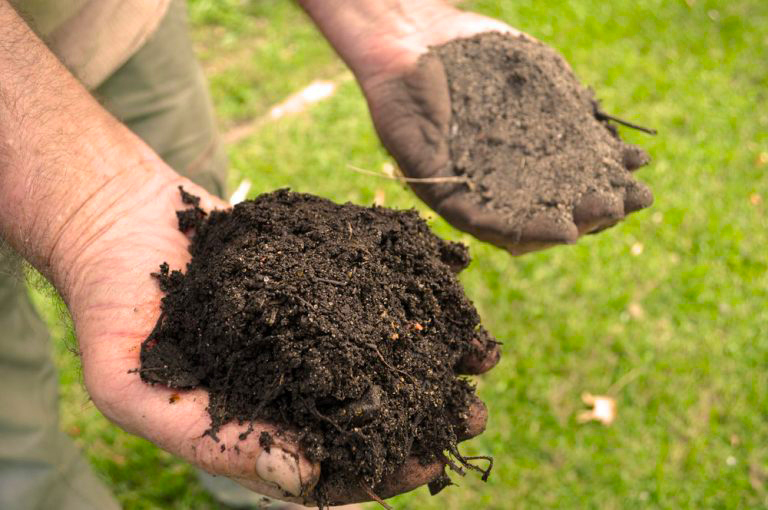
MAY SOIL PREP
New Beds: Double-digging is the best way to prepare a planting bed on a site that’s never been dug before (or hasn’t been dug for a long time). It will seem like a lot of work at first, but the results will be well worth it, whether you’re growing perennials, vegetables, herbs, annuals, or windsock geese (well, you probably don’t need to double-dig if all you’re planting is windsock geese).
How To Double-Dig A New Bed: Lay out the edges of new planting beds with stakes and twine. (Four feet is the optimum width for a bed; such a width lets you work the bed from either long side without having to walk over the bed’s soil, compacting it. Wider beds will require pathways built into them.) Remove any sod covering the area and put the sod pieces in the compost heap. Divide the undug bed into 1-foot wide strips running the length of the bed. Starting at one end of the bed, dig a hole 1 foot square and 1 foot deep. Remove the soil and cart it over to the opposite end of the bed. With a spade, loosen the soil at the bottom of the hole to the depth of another foot. Then sprinkle into the hole any soil amendments you wish to add at the following rates:
- Homemade or commercial compost: Aids moisture retention, adds some nutrients, and feeds beneficial soil mycorrhizae. Application Rate: For sandy soils or soils low in organic matter, at least 1 part compost to 4 parts soil (that’s at least 3 inches of compost to each 1 square foot hole). Recommended Product(s): Payne’s 100% Natural Soil Conditioner or Forest Magic Organic Compost.
- Drainage material: Improves drainage in heavy clay soils. Application Rate: At least 1 part drainage material to 4 parts soil (that’s at least 3 inches of drainage material to each 1 square foot hole). Recommended Product(s): Crusher fines, gravel, pelletized gypsum, or crushed pumice.
- Fertilizer and soil amendments: Adds nutrients. Application Rate: Follow directions on fertilizer label. Recommended Product(s): Yum Yum Mix; Gro-Power and Gro-Power Plus; Earth Magic; Peace of Mind; El Toro Steer Manure or other well-aged animal poop; rock phosphate or greensand; kelp meal; alfalfa meal; worm castings.
When you’ve finished adding soil amendments to the first 1-square-foot hole, dig a second 1’ x 1’ x 1’ hole next to the first. Take the soil from the top foot of the second hole, and transfer this soil to the first hole. Then loosen the soil at the bottom of the second hole another foot down and add soil amendments. Continue in this way down the bed, digging your holes and transferring their dirt into the previous hole. When you reach the end of the bed, turn around and work your way back in the other direction down the second 1’-wide row, until the entire bed has been dug and fertilized to the depth of 2 feet. The last hole will be filled with the dirt you took out of the very first hole you dug. Now go back over the double-dug bed one last time, mixing the soil amendments thoroughly with the soil of the bed. You’ll end up with a fluffy, overstuffed, slightly raised bed. Water the bed thoroughly with a sprinkler or hand-held hose. Let the soil settle for a few days, then install any soaker hose or drip system you plan to use. Now it’s time to plant!
